Health
Special Report-UMTH: Looking at the Cancer Center Under Professor Ahidjo’s Led Management Team (3)

Special Report-UMTH: Looking at the Cancer Center Under Professor Ahidjo’s Led Management Team (3)
By: James Bwala
As a way to wrap up this piece, let me mention that the management team of Professor Ahmed Ahidjo is actively working to provide Nigerians seeking assistance with cancer treatment with the greatest possible care. The CMD has taken concrete action and made public statements to support the training of doctors who specialize in clinical oncology and related fields. If only to find water, the CMD might go anywhere and crack the rock. An official count of oncology or general surgeons in Africa could not be located after searching through reports on cancer-related topics. In 2010, a thorough analysis of the literature from sub-Saharan Africa (except from South Africa) on the state of surgery in the region indicated that there were just under two surgeons for every 100,000 people living there. For comparison, there were more than 35 surgeons in the same number in England.
As a result, surgery and anesthesia were performed—and are still performed—in many district hospitals by non-physicians who received special training for the job. The majority of oncologic surgery was carried out by general surgeons in referral hospitals. According to the study, the large-scale emigration of medical school graduates and the lack of surgically specialized programs in many African nations were the main causes of the low number of surgeons in the region.
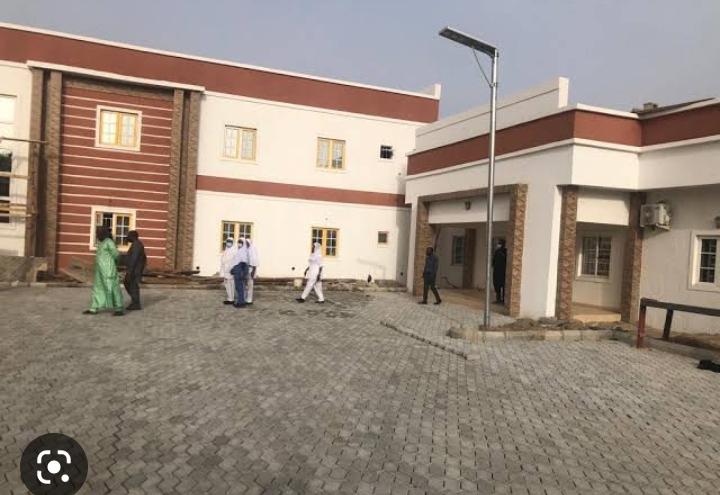
Many Nigerians are now wondering how Professor Ahmed Ahidjo was able to reach the ground under his leadership in hospital management at the University of Maiduguri Teaching Hospital, which prides itself as the “Centre of Excellence”. We also made inquiries. How many radiation facilities are currently operating in Africa? Are these covering the need for cancer therapy sufficiently? How many additional units will be necessary? And so on. Radiotherapy plays a major role in the curative arsenal of a cancer unit.
When examining the primary therapeutic approaches utilized to treat cancer patients, it was discovered that surgery was the primary approach in 49% of cases, radiation was the primary approach in 40% of cases, and chemotherapy was the primary approach in the remaining 11% of cases. According to a survey conducted in the high-income nation of Australia, little more than 52% of cancer patients required radiotherapy as part of their treatment regimen. However, it is believed that up to 60% to 70% of new patients in low-income countries require radiotherapy due to a lack of surgical treatments and the high proportion of advanced-stage tumors that call for palliative care.

In light of this, only 277 external-beam radiation devices were registered for the African continent in the IAEA’s Directory of Radiation Centers in 2010. Of them, two nations—South Africa and Egypt—accounted for 60%. In addition, of the 52 nations surveyed, 29 African nations did not offer radiotherapy to cancer patients. According to the IAEA, more than 700 additional teletherapy machines would be needed on the continent given the estimated 713,206 cancer cases per year in Africa (according to GLOBOCAN 2008) and the fact that one teletherapy machine can treat 450 new cases of cancer annually.
There are currently no specific statistics available on the accessibility of chemotherapy drugs across the continent of Africa. In 2012 and 2018, an assessment of the situation in sub-Saharan Africa was made, which revealed a number of issues. All 22 of the chemotherapeutic medications on the WHO essential list are probably imported into the region, most of them as generics, but not all of the medications are always available. It is assumed that there is a severe scarcity of systemic anticancer drugs based on extrapolating the status of other critical medications on the WHO list, whose availability was proven to cover barely half of the demand. The scientists also discovered that, on average, the prices of pharmaceuticals in Africa were between 2.7 and 6.1 times higher than the prices used as international benchmarks. Finally, they calculated that there aren’t enough certified medical professionals available to give chemotherapy.
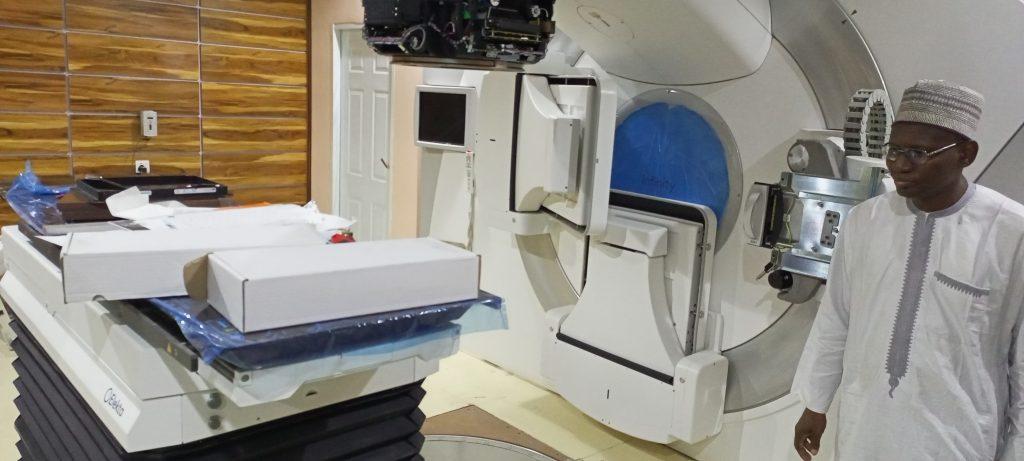
The situation is best illustrated by a review of the pharmaceuticals accessible for cancer therapy at a cancer center in Tanzania; over the time period studied, only about 50% of the specified medicines were available, which resulted in more than 70% of patients not receiving adequate therapy. The expense of purchasing the medications privately ranged from 1 to 7 months’ worth of income. Only a few patients were able to pay because the majority of them lacked insurance. Services in anatomic and clinical pathology are essential for cancer prevention. Pathology studies provide evidence for each stage of the diagnostic process, including the detection of malignant disease, diagnosis, staging, planning the surgical procedure, assessing management complications, and monitoring the outcome of treatment.
Furthermore, pathologic confirmation of the diagnoses is required for the cancer registry data to be taken seriously. For realistic planning of cancer control measures, this final input is crucial. Although there are no official statistics on the state of pathology services in Africa, the information that is currently available indicates a serious shortage in both quantity and quality. According to a 2012–20 informal assessment of pathology capacity in sub-Saharan Africa, the number of pathologists in the region was roughly 10% lower than that of specialists in fields equivalent to pathology in high-income nations.
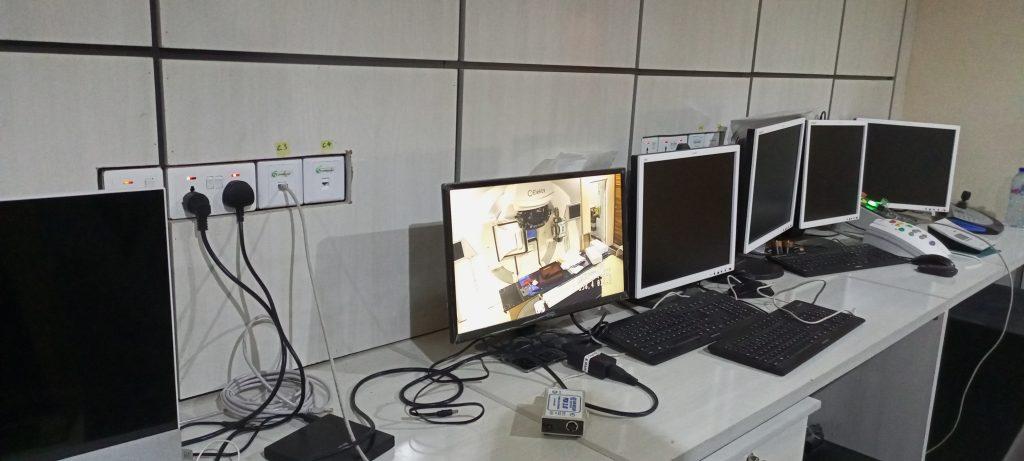
The African Pathologists Summit, held in 2013 in Dakar, also noted the lack of pathologists and technicians, the poor state of the equipment, the inadequate infrastructure, and the difficulties in getting laboratory supplies. An extensive assessment of cancer prevention in Africa was just released. The analysis reiterates that most malignancies in Africa with the highest incidence rates can be prevented. For instance, human papillomavirus vaccination and other population screening techniques can prevent cervical cancer; hepatitis B vaccination can prevent liver cancer; eliminating malaria and HIV infections can lower the risk of Burkitt lymphoma (HIV is also the primary cause of the high incidence of Kaposi’s sarcoma); and limiting sun exposure can prevent skin cancer.
The investigation did discover that the region’s preventative measures are insufficient. According to the literature, not enough people are aware that cancer exists as a disease, that it has risk factors and manifestations, and that there are methods for preventing and treating it. Additionally, a number of cultural aspects make it difficult to use preventative strategies developed for other sociocultural contexts. The infrastructure and staff in place to enable mass prevention efforts in the health sector are insufficient. Although vaccination programs against the human papillomavirus and the hepatitis B virus are conducted on the continent, they are mostly supported by funding from outside organizations like the United Nations or the Global Alliance for Vaccines and Immunizations.

Governments lack the motivation to fully commit to the fight against cancer, and the majority of nations lack national cancer registries, which would provide accurate information on the scope and character of the issue. In a 2009 analysis of the global burden of cancer, the Economist Intelligence Unit discovered a significant gap between the cancer costs on the African continent, which accounted for just 0.3% of the global costs, and the continent’s share of the world’s new cases of cancer, which accounted for 6.4% of the world’s annual total. The amount spent on cancer treatment is disproportionately low in Africa since the majority of cancer costs are represented by medical expenditures (medications, medical procedures, charges for hospitalization, and outpatient visits).
READ ALSO: https://newsng.ng/the-plight-of-farida/
We were able to see the wider picture of the efforts being made by Professor Ahmed Ahidjo, Chief Medical Director of the University of Maiduguri Teaching Hospital, and his management team to find a solution to a more significant issue the world is currently facing thanks to his high-level explanation, study results, and real-world data. The newly opened Cancer Center at the University of Maiduguri Teaching Hospital (UMTH) would go a long way toward reducing the amount of regular medical travel that Nigerians engage in. The Cancer Center is the only facility in Nigeria with four bunkers and cutting-edge medical equipment to ensure that cancer patients receive top-notch care.
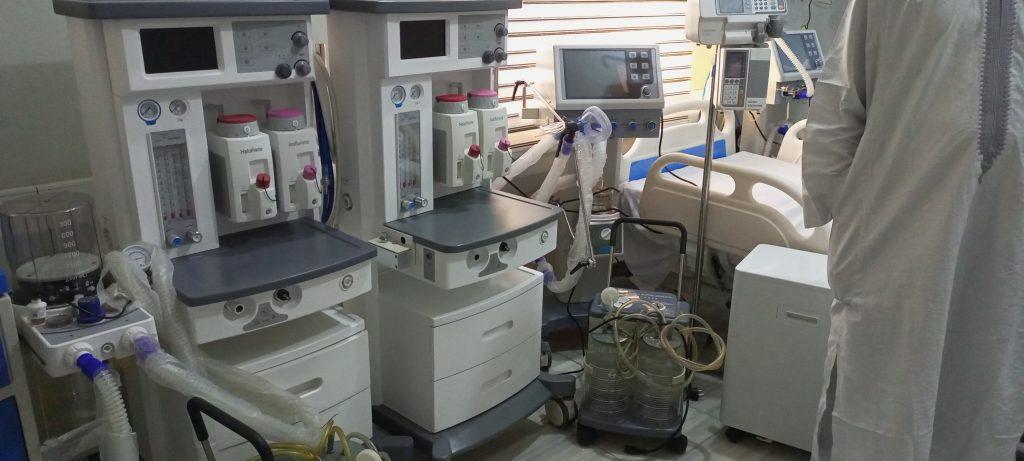
Recalls that Alh. Mamman Mamuda, the Permanent Secretary of the Federal Ministry of Health, said of the UMTH during the inspection of projects completed in the hospital that other cancer centers across the nation “are not up to the standard” of the UMTH Cancer Center and lack the capacity. From what I have observed on the ground, I can conclude that the UMTH is prepared to put an end to medical tourism in Nigeria, he claimed. We have already begun planning ways to make the UMTH a recipient of the Federal Government of Nigeria’s Cancer Support Fund.
The Cancer Center, which cost more than N5 billion to build, has the newest medical facilities in Sub-Saharan Africa, according to the Chief Medical Director (CMD) of the UMTH, Prof. Ahmed Ahidjo. He also noted that the goal of the UMTH is to prevent any medical issues from being referred to outside facilities, such as the Epic Hospital in the North East Region. We have two linear accelerators, two brachytherapists, and four bunkers here. We are bringing the first linear accelerators into Nigeria with the Nectar Infinite. The second one, HD Versa, for which the Federal Ministry of Health recently completed the purchase procedure for us, is the first to enter sub-Saharan Africa and the most recent method used globally.
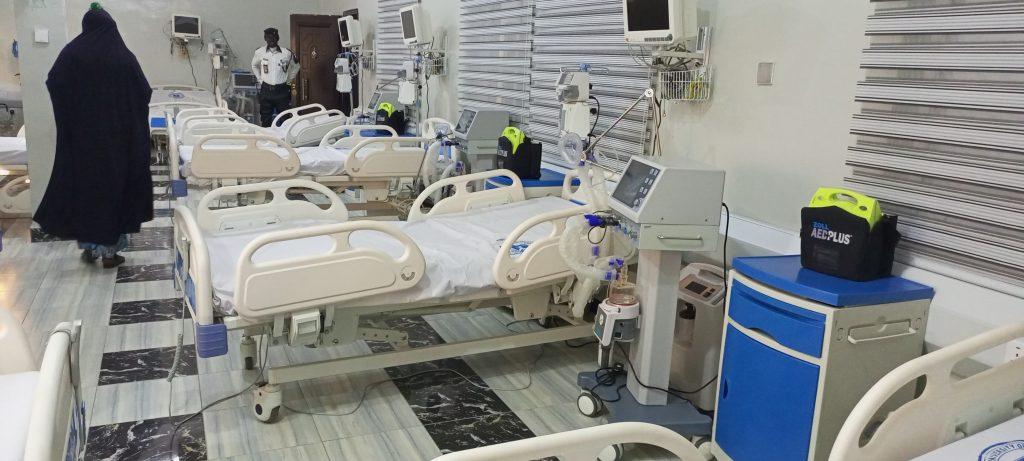
Alongside the Permanent Secretary, Director of Hospital Services Dr. Adebinpe Adebiyi praised the Cancer Center as one of the greatest in the nation and claimed that “it is beating the trends” set by other centers before it. Dr. Adebiyi disclosed that the management of UMTH has given the issue of staffing the new cancer center great priority, noting that the capacity building of professionals to staff the center has been completed. “When Nigerians travel overseas and encounter other Nigerians, they are treated with respect. Why are they not able to treat Nigerians here? It was her.
In Borno State, the CMD is being praised for the several initiatives he is putting in place to make Maiduguri a tourism hub for health in Nigeria, especially with the country’s largest cancer center and cutting-edge medical technology. The move and encouragement needed from the previous administration to the current one, under President Bola Ahmed Tinubu, is to have more federal presence at the University of Maiduguri Teaching Hospital through activities that would promote bigger dreams for a better health solution in Nigeria.
Special Report-UMTH: Looking at the Cancer Center Under Professor Ahidjo’s Led Management Team (3)
Health
UMTH wins the 2025 Public Tertiary Healthcare Facility of the Year Award.

UMTH wins the 2025 Public Tertiary Healthcare Facility of the Year Award.
By: Dr. James Bwala
The University of Maiduguri Teaching Hospital (UMTH) has once again demonstrated exceptional commitment to healthcare excellence by winning the 2025 Public Tertiary Healthcare Facility of the Year Award for the second time. This accolade underscores UMTH’s sustained efforts in providing high-quality medical services, advancing clinical research, and fostering an environment conducive to both patient care and academic development. Such recognition not only highlights the institution’s leadership within Nigeria’s healthcare sector but also reflects its pivotal role in addressing complex health challenges in the region.
This is a big congratulations to the CMD, Professor Ahmed Ahidjo, and his management team for another historic achievement. Winning this award consecutively signifies UMTH’s ability to maintain superior standards amidst evolving healthcare demands. The hospital’s integration of innovative treatment protocols and community-oriented outreach programs exemplifies best practices that contribute significantly to public health outcomes. As a teaching hospital, UMTH also plays a critical role in training future healthcare professionals, thereby ensuring a continuous supply of skilled practitioners dedicated to improving national health indices.
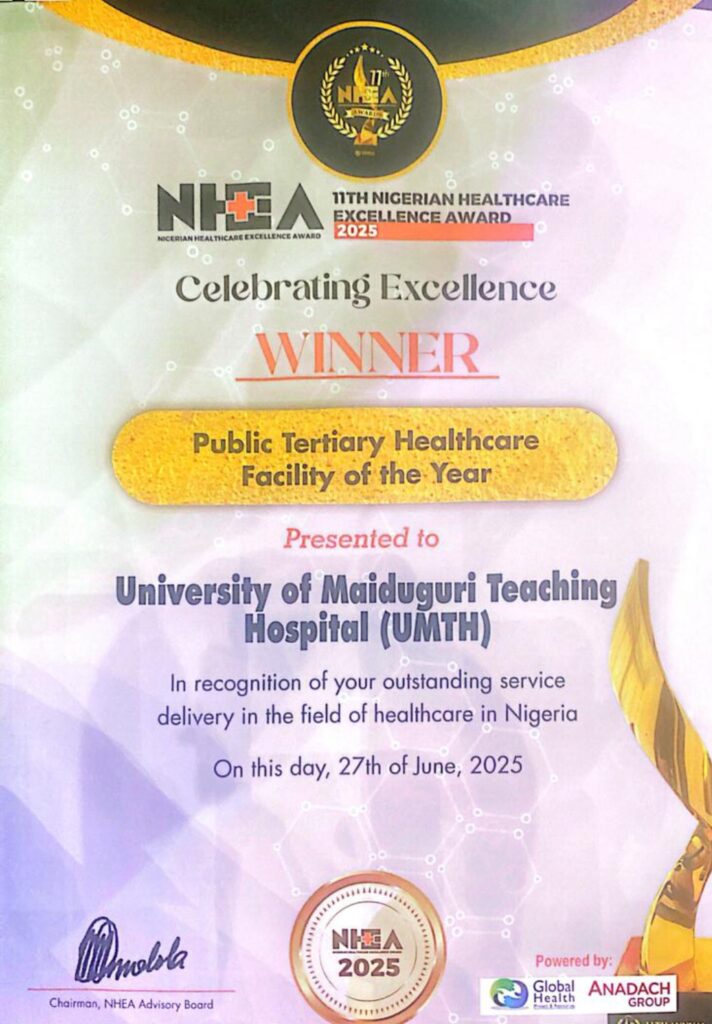
UMTH’s consecutive recognition as the top public tertiary healthcare facility reaffirms its status as a beacon of medical excellence and educational prowess in Nigeria. Maintaining such standards is essential for driving progress within the country’s healthcare infrastructure and enhancing patient care quality on a broader scale. UMTH’s strategic partnerships with global health organizations have facilitated the exchange of knowledge and resources, further enhancing its capacity to deliver cutting-edge healthcare solutions. This collaborative approach not only strengthens UMTH’s operational capabilities but also positions it as a model for other institutions aiming to elevate healthcare standards across the continent.
The hospital’s commitment to research and development has led to groundbreaking advancements in medical science, reinforcing its reputation as a leader in healthcare innovation and education. In addition, UMTH’s emphasis on patient-centered care has fostered an environment where individuals feel valued and heard. This patient-centered approach, combined with their ongoing commitment to excellence, underscores UMTH’s role as a pivotal institution in shaping the future of healthcare delivery in Africa.

The hospital’s investment in state-of-the-art technology and infrastructure has also played a vital role in its ability to provide high-quality care and respond effectively to the evolving needs of the community. This dedication to leveraging advanced medical technologies and maintaining a patient-first philosophy has undoubtedly contributed to UMTH’s recognition at the national level, securing its place as a beacon of excellence in the healthcare sector.
READ ALSO: https://newsng.ng/the-plight-of-farida/
Professor Ahmed Ahidjo, the CMD, has printed his foot on the sand of history as UMTH’s success story. This success story serves as a testament to the power of strategic vision and dedicated leadership in transforming healthcare services for better societal impact. This achievement not only highlights the hospital’s ongoing pursuit of healthcare excellence but also serves as an inspiring model for other institutions aiming to elevate their standards of care and operational efficiency.
The award not only acknowledges the exceptional service delivery and innovative practices at UMTH but also underscores the hospital’s role in setting a benchmark for healthcare quality and patient satisfaction across Nigeria. This recognition is a testament to the hospital’s commitment to continuous improvement and its ability to adapt to the evolving challenges in the healthcare sector. This accolade not only highlights their exceptional service delivery but also reinforces their position as a leader in medical innovation and education within the region.
This commendation reflects UMTH’s unwavering dedication to nurturing future healthcare leaders through robust educational programs and cutting-edge research initiatives. UMTH’s dedication to fostering an environment of continuous learning and adaptation has enabled it to remain at the forefront of healthcare innovation. The recognition further solidifies UMTH’s reputation as a pillar of healthcare excellence. The hospital’s strategic focus on integrating advanced technology with patient-centered care has been pivotal in achieving these remarkable milestones.
UMTH’s proactive approach in collaborating with international health organizations has also played a significant role in enhancing its service delivery and research capabilities. This collaborative effort not only enhances their clinical practices but also ensures that the hospital remains at the cutting edge of medical advancements and global health standards. This recognition is not only a testament to UMTH’s achievements but also a motivation to continue pushing the boundaries of what is possible in public healthcare.
* James Bwala, PhD, writes from Abuja.
UMTH wins the 2025 Public Tertiary Healthcare Facility of the Year Award.
Health
UMTH conducts successful kidney transplant 15 years after
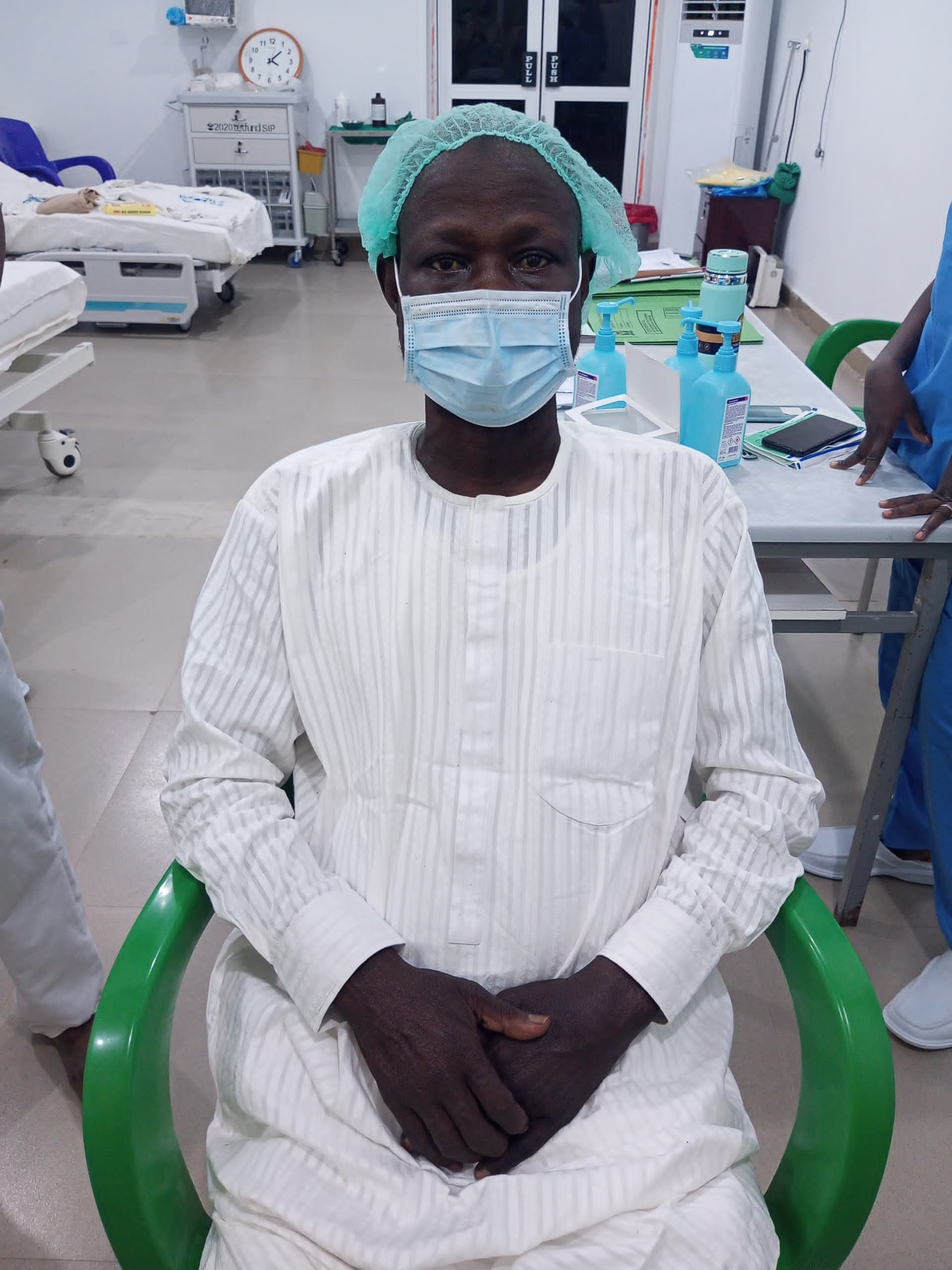
UMTH conducts successful kidney transplant 15 years after
….CMD calls for philanthropic support to enable the hospital save more lives from CKD
By: Sam Kayode
Chief Medical Director (CMD) of the University of Maiduguri Teaching Hospital (UMTH) Professor Ahmed Ahidjo has called on well-meaning individuals to sponsor kidney transplant against chronic kidney diseases (CKD)in the institution.
Professor Ahidjo made the appeal recently in a news conference in Maiduguri while announcing the successful transplant of kidneys to two patients in the hospital.
Speaking during the occasion at the UMTH Conference Hall, CMD, Professor Ahidjo, described the procedure as a landmark success attributable to the hospital’s preparedness, the support of management and the goodwill of an anonymous philanthropist who paid for the consumables.
He said that since kidney failure has become a serious challenge in the north east of Nigeria especially Borno, it is high time well meaning individuals who share in our common humanity support more transplants by bringing in their resources to bear so that more victims of CKD can continue to enjoy prolonged life from available transplants.
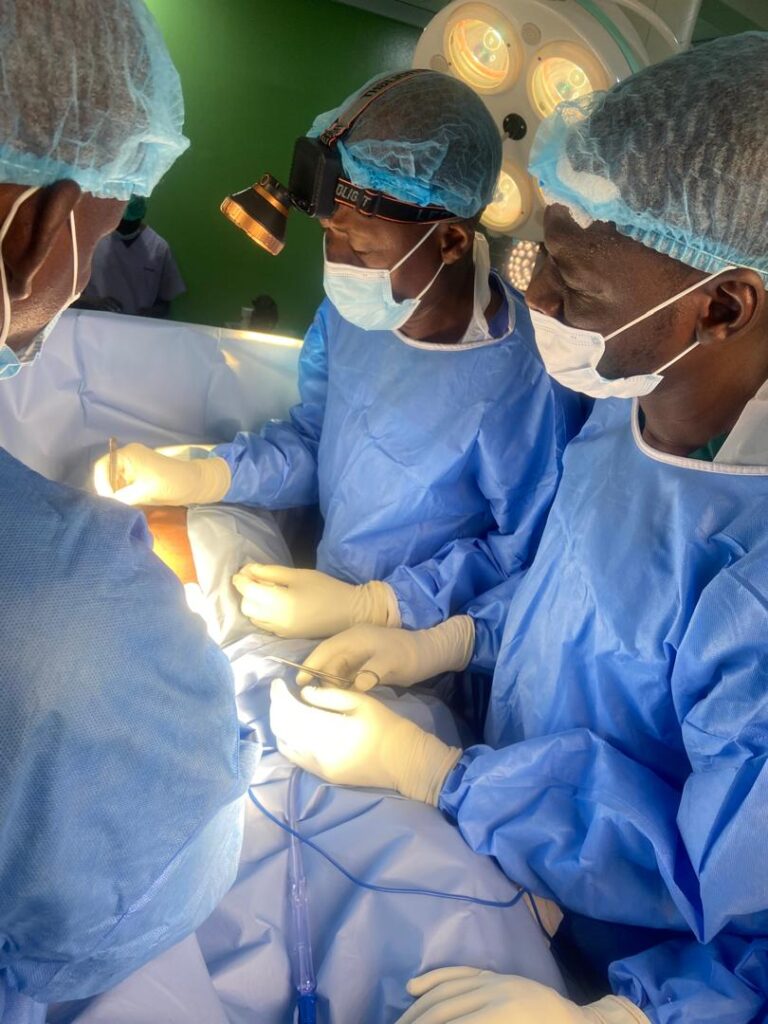
Ahidjo hinted that five million naira was paid by an anonymous donor for each of the patients who got a new kidney in the recent operation and that to him is his expectations towards this challenge because a transplant ordinarily costs about N13.5m to execute successfully in contemporary Nigeria.
The CMD noted that kidney challenges will no longer be a death sentence if there is a pool of consumables to support each operation which would be done virtually free by the UMTH medical team as a way of lessening the prevalence burden in the state.
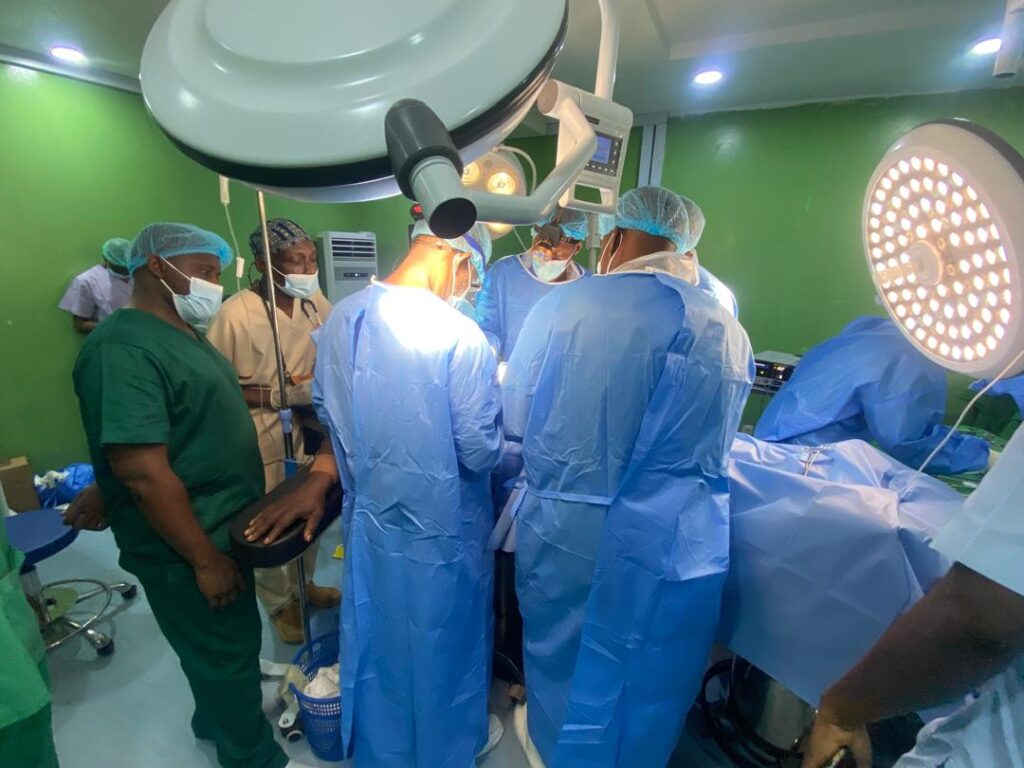
Responding to questions by reporters the CMD added that the hospital is ready to conduct free operations for the next 20 patients who desire new kidneys adding that the only challenge for such operations is ‘consumables” but once that is on ground the rest would be history.
” As an institution, we are ready for the next 20 patients because we are footing the bill of all the technical details but the consumables are quite expensive. This is why I am appealing for sponsorship of more patients at least to the level of being stabilized because the bulk of the charges we make are for the consumables and these are subject to a revolving fund to ensure that others on the waiting list get the same quality service.
” Donors should come out and support this cause as quickly as possible because so many patients have end stage kidney problems but they do not have the resources to get the care they need. And this is why we need the support of fellow Nigerians out there to keep them alive.” Said the CMD.
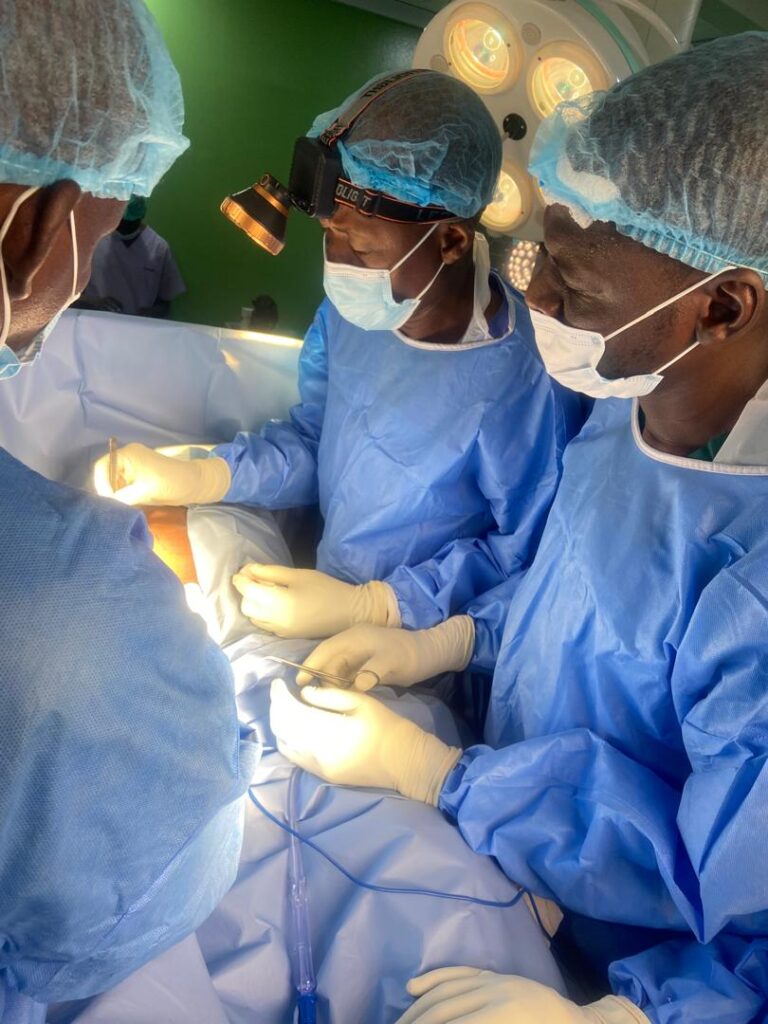
The UMTH he maintained has successfully reinforced its reputation by conducting the cheapest kidney transplants after 15 years indicative of the fact that it is now the leading renal treatment center in Nigeria today.
Roll call of successful transplant
Several specialists involved in the operation led by neurologist Dr. Hassan Gogo and the surgical team carried out the transplants and they include, Professors Umate, the lead Nephrologist, Sani Alhassan a Surgeon, lbrahim Gaidam, Fela Usman, and Dr Hassan Digo all of them Urologists.
Team of Anesthetics include: Ahmed Alhaji, Doctors’ kullma Zakana, Hadiza Bako, Bukar Ahmad, Aisami mustapha, Buhani Ghidie and Atiku.
Nephrology Nurses include, Yagana kingi, Maryam Alhassan, Babagana Gubio, Yagana Mohammed and Abubakar.
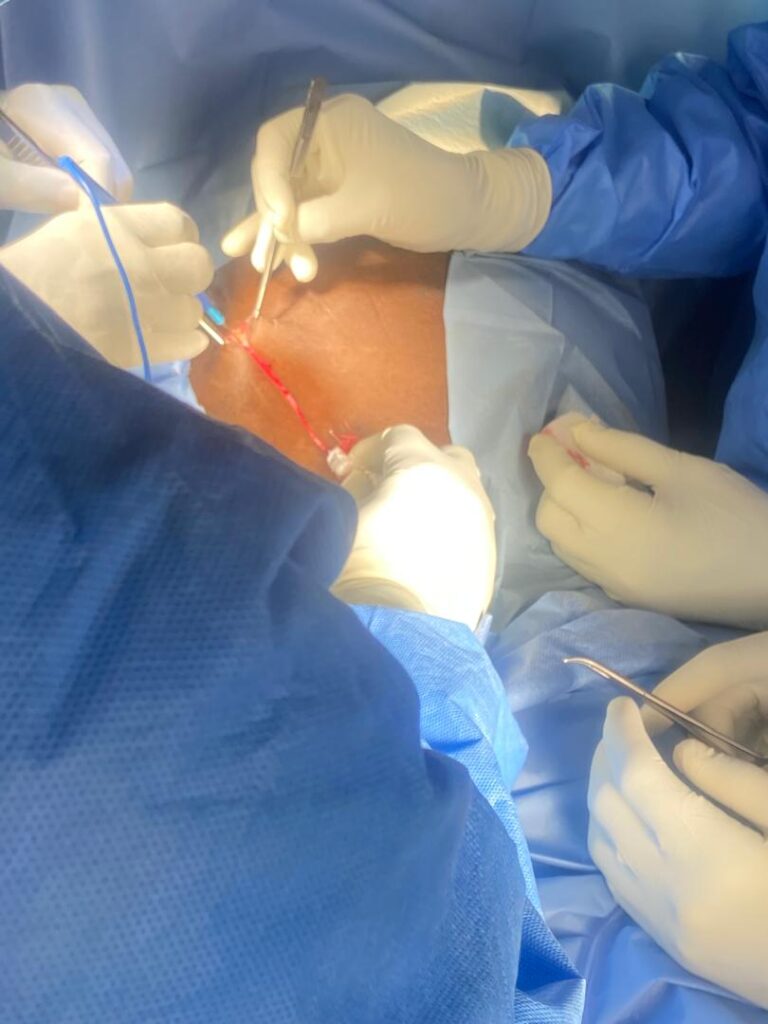
Perioperative nurses present in the operation were, Babagana Korede, Kamsulum Umate, Christiana Michael, Kolo Bulama, Bola Ayeni, Amina Tamus and Zainab Mohammed.
Technicians include: Abubakar Umar, Shettima Maryam and Abdullahi lawan while two porters Aisha Idi and Fah ibrahiin were among the team that
conducted the Surgery
Professor Mohammed Gadam, Dr. Ahmed Head of the Anaesthesia Unit Dr. Zanna, and Professor Sani Alhaji Hassan. Prof Haruna Ngaddah Consultant Anatomic Pathology and Forensic Medicine was the Lab team lead.
“This is not the first time UMTH has performed a kidney transplant. Our first was in August 2010. So you can see that with improved capacity and technology, we’ve resumed the procedures in full and ready to do many more,” said Prof. Ahidjo.
UMTH kidney centre
Ahidjo an interventional radiologist hinted that the UMTH hosts the largest kidney centre in Nigeria, with an 85 bed capacity and four operating theatres equipped with advanced surgical equipment like endoscopic cameras, and modern lighting systems.
Narrating further the latest developments in the kidney centre, Prof Ahidjo, stated that the hospital now has over 20 functional dialysis machines and an “independent renal laboratory centre” making it easy for patients to have what they need as at when due and reducing the burden of red tape of the main hospital laboratory.
He commended the Federal Government for subsidizing kidney dialysis, adding that UMTH now offers dialysis for just twelve thousand Naira per session roughly eight United States dollars making it one of the cheapest rate in the country.
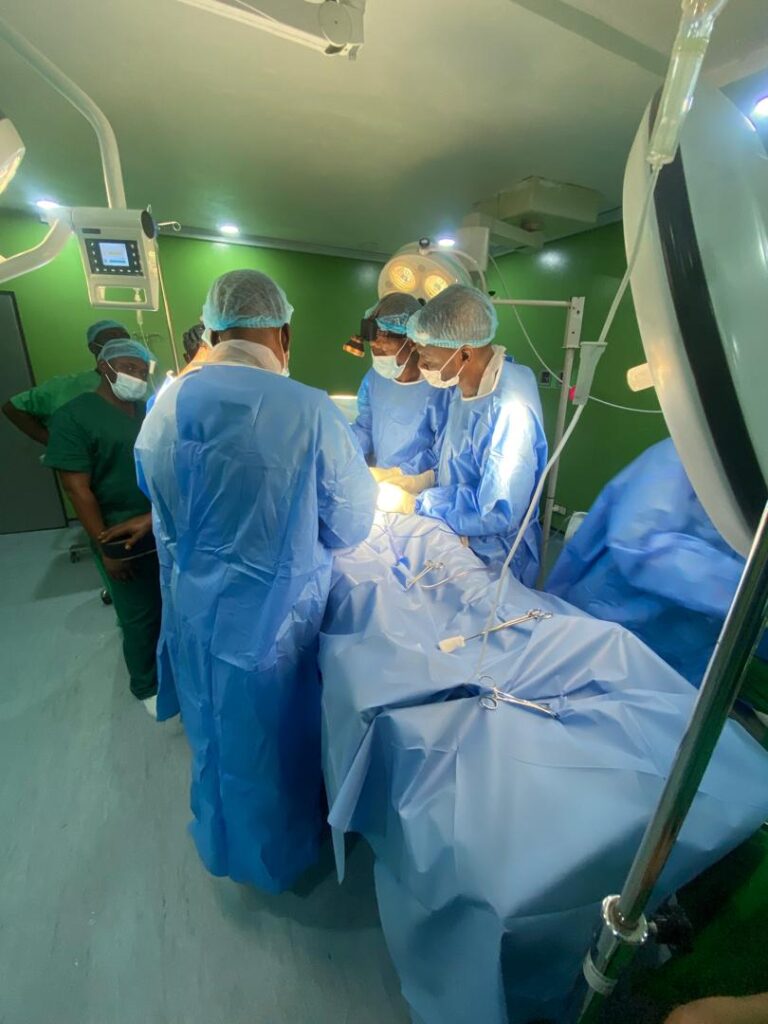
“In Nigeria and other parts of the world, dialysis cost as much as $1,000 per session but the support we receive makes this possible as we meet the needs of the people of the sub region.
“The cost of the service doesn’t even cover maintenance of the machines, but we are determined to keep our services accessible to the public,” he said.
The CMD commended Vice President Kashim Shettima for initiating the subsidized kidney dialysis program in Borno and reaffirmed that UMTH will continue to serve humanity in this manner.
Borno state sponsored Kidney research
The CMD lauded Governor Babagana Zulum of Borno state for providing a special grant of ₦50 million to the hospital for onward investigation of causes of Kidney failures in Borno State.
The research has been going on simultaneously but even though the results have not been officially released, the research on kidney failure in Borno State indicates a significant burden of CKD with hypertension and glomerulonephritis being major contributing factors.
Checks on a source who commented about the ongoing study of the prevalence of CKD in Maiduguri hinted
that the researchers found out that a substantial percentage of patients on dialysis so far had CKD of unknown cause.
Prof. Ahidjo while responding to a question on CKD however hinted that diabetes and hypertension were equally major contributors to kidney malfunctions in the region.
He maintained that samples already taken are being analyzed to determine specific regional causes, while urging the public to adopt healthier lifestyles, stay hydrated, and engage in regular physical activity to reduce risks.
Prevalence of high CKD has been noticed specifically in central and southern Borno but the research is yet to establish if it has anything to do with the water consumed or the general lifestyle of the residents of this region of the state.
UMTH conducts successful kidney transplant 15 years after
Health
‘We are no longer afraid’: MSF hands over Lassa fever care in Ebonyi State
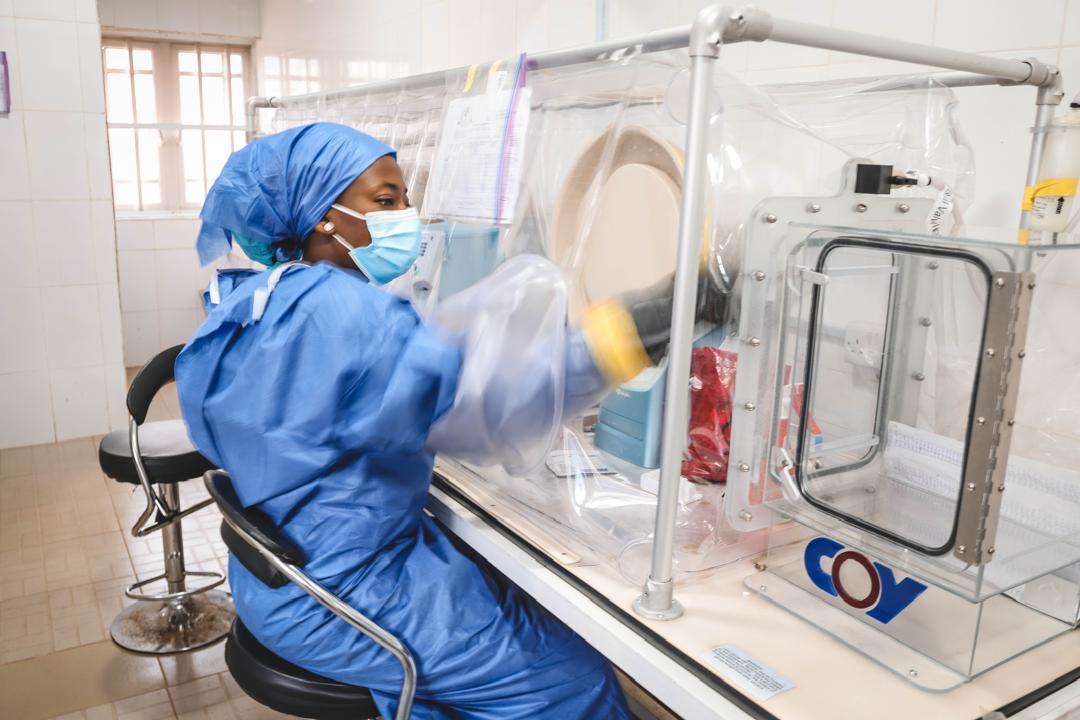
‘We are no longer afraid’: MSF hands over Lassa fever care in Ebonyi State
By: Michael Mike
Abuja, 18th June- After seven years of critical support from Médecins Sans Frontières (MSF), local health authorities in Ebonyi State are now well equipped to take on Lassa fever with improved infrastructure, training, and resilience—saving lives and restoring confidence in the healthcare system.
In early 2018, Ebonyi State in southeastern Nigeria faced a serious public health concern. Lassa fever – a potentially deadly viral haemorrhagic neglected tropical disease – recorded a particularly high seasonal outbreak, with a much larger number of cases, overwhelming hospitals and claiming numerous lives, notably among healthcare workers, particularly exposed to infection risks.
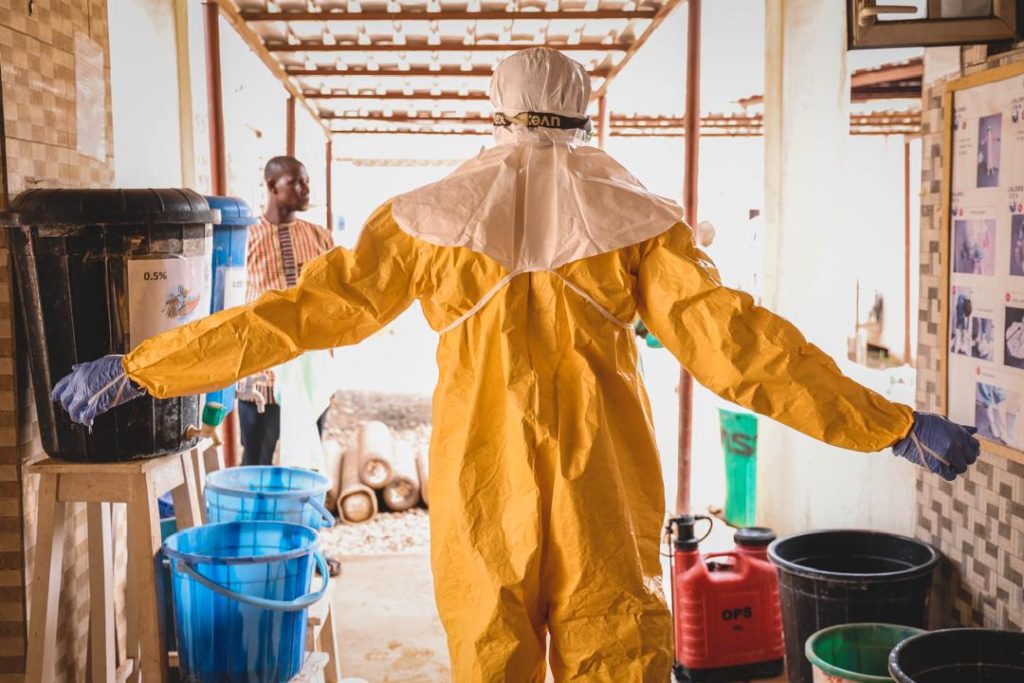
“We lost doctors, nurses, and cleaners,” recalled Dr. Nnennaya Anthony Ajayi, then head of clinical services at the virology unit of the Alex Ekwueme Federal University Teaching Hospital Abakaliki (AE-FUTHA), the state’s main referral centre. “There was panic. In the hospital, 16 healthcare workers passed away. People were afraid to go near the emergency room.”
Though the federal and state governments had already made strides—building an isolation ward and setting up a virology lab—AE-FUTHA was not prepared for the outbreak’s scale. Personal protective equipment (PPE) was scarce. Infection control procedures were unclear. Samples had to be sent to distant labs for confirmation. Suspected patients were sometimes kept in open spaces, and the risks for staff were devastating.
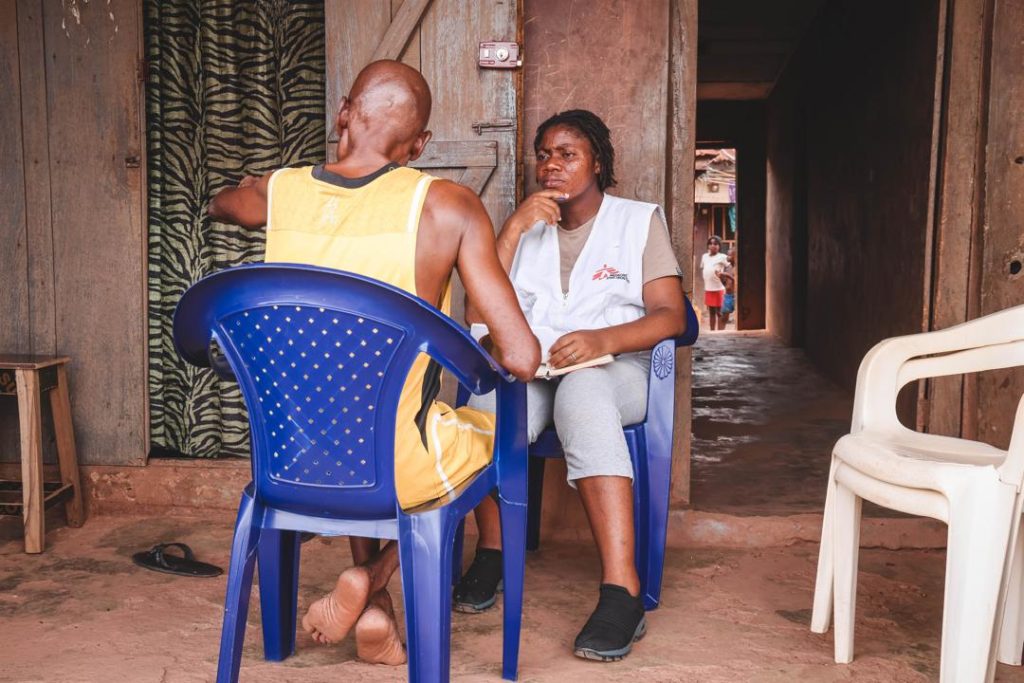
It’s in that context that MSF, also known as Doctors Without Borders, arrived in Abakaliki to support the response. What began as an emergency intervention soon evolved into a seven-year partnership with the Ebonyi State Ministry of Health, laying the groundwork for sustainable, locally led Lassa fever care.
Protect Health Workers, Improve Care for Patients
From the outset, MSF’s top priority was clear: stop the loss of healthcare workers.
“We had to put an end to this series of avoidable deaths,” said Alain-Godefroid Ndikundavyi, MSF’s most recent project coordinator in Ebonyi. “Our main objective was to reverse that trend and to reinforce the hospital’s capacity to better receive and treat patients with the disease.”
MSF’s intervention was wide-ranging. The organisation built triage and observation areas, distributed PPE, implemented robust infection prevention and control (IPC) systems, and trained local staff to manage Lassa cases safely and effectively.
“They helped us structure patient flow, IPC and biosafety measures, and provided what we needed to work safely,” said Dr. Ajayi. “They brought structure, training, and most importantly, hope.”
In total, over 230 training sessions for healthcare workers were delivered, and laboratory capacity was strengthened, enabling faster diagnosis. Eventually, a new model of care was put in place to deal with the disease, protect staff, and better support patients.
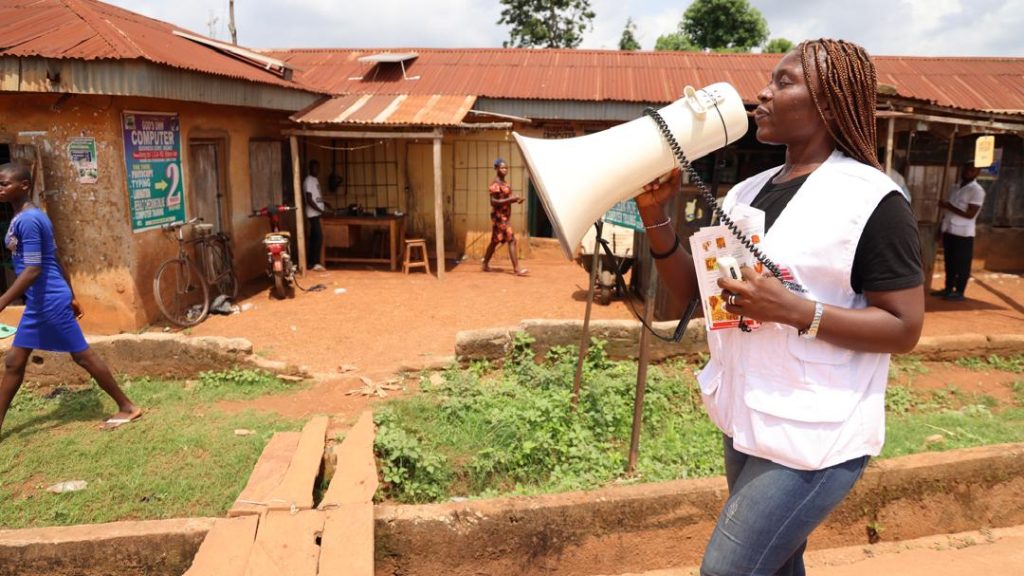
Between 2018 and 2024, MSF supported the treatment of 1,701 suspected and 427 confirmed Lassa fever cases. MSF also paid the full cost of patient care—including dialysis, medications, and meals—which significantly reduced fatalities.
Crucially, deaths among healthcare workers fell dramatically, with many years passing without a single death being recorded.
Reaching Beyond the Hospital
But MSF understood that stopping Lassa fever required action far beyond hospital walls. The disease thrives in communities where public health awareness is low and early detection is lacking.
“To bridge that gap, we mobilised health promotion teams that conducted over 4,500 education sessions and nearly 1,300 community visits across Ebonyi State,” said Ndikundavyi. “These efforts demystified the disease, corrected misconceptions, and encouraged early care-seeking behaviour.”
MSF also supported two primary healthcare centres in rural areas—Izzi Unuhu and Onuebonyi—providing training, lab equipment, medical supplies, and even building water towers to ensure safe sanitation. The goal was to catch Lassa fever early and ease the burden on AE-FUTHA.
“We realised that to truly fight Lassa, the response had to start at the community level,” said Ndikundavyi.
A New Chapter
In 2025, MSF formally handed over operations to the Ebonyi State Ministry of Health and AE-FUTHA. This transition was carefully planned and included donations of medical equipment, ambulances, and waste management tools. Enough supplies were provided to last through the next Lassa fever peak season.
“We officially handed over management responsibilities at the end of 2024 but kept an observational team on until March of this year, in case the Ministry needed additional resources,” Ndikundavyi said.
MSF also supported the creation of internal committees within AE-FUTHA to maintain standards in infection control, patient care, and outbreak response—ensuring that progress would continue after their departure. More broadly, MSF experts partnered with the Nigeria Centre for Disease Control and Prevention (NCDC), state and federal authorities to improve detection, prevention, and medical care guidelines.
Today, AE-FUTHA is a different place. Gone are the days of improvised gear and terrified staff. Healthcare workers now operate with confidence, knowledge, and access to proper equipment. Patients are treated with dignity, and survivors return home with hope. Not as outcasts, but as symbols of resilience.
The fight against Lassa fever is not over. In 2024 alone, 24 confirmed cases were recorded in AE-FUTHA, with one death among the hospital staff—still tragic, but a far cry from what happened in 2018, when 16 healthcare workers alone were lost.
“We are no longer afraid,” Dr. Ajayi said. “MSF helped us believe that we could fight Lassa fever—and win.”
‘We are no longer afraid’: MSF hands over Lassa fever care in Ebonyi State
-

 News1 year ago
News1 year agoRoger Federer’s Shock as DNA Results Reveal Myla and Charlene Are Not His Biological Children
-

 Opinions3 years ago
Opinions3 years agoTHE PLIGHT OF FARIDA
-

 Opinions4 years ago
Opinions4 years agoPOLICE CHARGE ROOMS, A MINTING PRESS
-

 News1 year ago
News1 year agoEYN: Rev. Billi, Distortion of History, and The Living Tamarind Tree
-

 Columns1 year ago
Columns1 year agoArmy University Biu: There is certain interest, but certainly not from Borno.
-
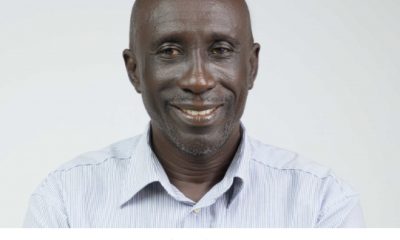
 ACADEMICS1 year ago
ACADEMICS1 year agoA History of Biu” (2015) and The Lingering Bura-Pabir Question (1)
-

 Opinions1 year ago
Opinions1 year agoTinubu,Shettima: The epidemic of economic, insecurity in Nigeria
-

 Politics1 month ago
Politics1 month ago2027: Why Hon. Midala Balami Must Go, as Youths in Hawul and Asikira/Uba Federal Constituency Reject ₦500,000 as Sallah Gift





